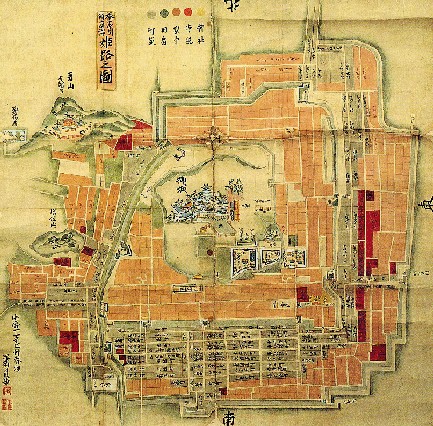This week on the Revised Intro to Japanese History: the social, religious, and economic changes of the Sengoku period. Though this is an age of civil war, it’s also an age of tremendous growth and change, and one that will lay the groundwork of much to come in future centuries.
Sources
Keene, Donald. Yoshimasa and the Silver Pavilion: The Creation of the Soul of Japan
Hesselink, Reinier H. The Dream of Christian Nagasaki: World Trade and the Clash of Cultures, 1560-1640
Segal, Ethan, “Medieval Economy,” Laver, Michael, “Diplomacy, Piracy, and the Space Between: Japan and East Asia in the Medieval Period,” Chance, Linda, “Medieval Art and Aesthetics” in Japan Emerging: Premodern History to 1850.
Images
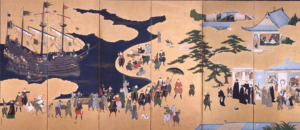
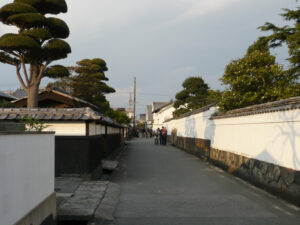
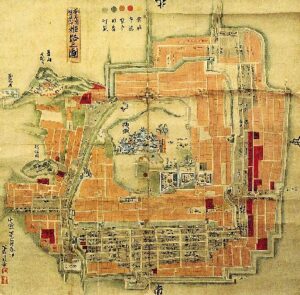
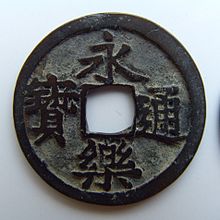
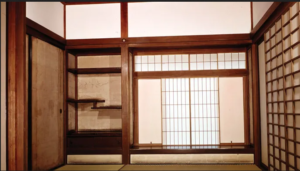
Transcript
We’re now 20 episodes into the Revised Introduction to Japanese history, at what is probably the half-way point, and of course already two episodes behind where I wanted to be (to the absolute astonishment of all longtime listeners, who know exactly how good I am at predicting how long things will take).
And, to be up front, I had debated taking this episode to just advance the timeline, so to speak–but there are some important things left to say about the Sengoku period before we leave it behind. So I’m just going to curse myself instead by saying that this is definitely the halfway point and there’s no way I’m going to add more episodes later down the line, and hey, that’ll take us to a nice round 40 so it’s symmetrical anyway.
And to be honest, I kind of find this approach appealing–because while up until this point, we’ve been focusing on the stories of the great clans and daimyo of the age of warring states, today is going to be all about the social and economic changes of the age of civil war.
And these are really important in their own right, and kind of the perfect thing to be talking about at the halfway mark. Because many of these changes will be instrumental in shaping what comes next.
You see, while people still use the three-part classical/medieval/modern schema derived from European history to periodize Japanese history–I’ve been using it myself in this very series–it’s not quite as fashionable to do so in academia as it once was. Instead, that schema has been replaced by a two-part one–premodern and modern–with the divide between the two coming more or less around 1600 with the end of the Sengoku period. And many of the institutions that will shape early modern Japanese history are created by the specific circumstances of the age of civil war, so setting them up at the half-way mark feels nicely symmetrical, for lack of a better word.
So with that said: what’s so different about the Sengoku Period?
And here, I think we have to start with the economy, because, well, money–as they say–makes the world go round.
It’s also a natural starting point from what we’ve been talking about recently, because it was the rise of the daimyo–the territorial warlords of the Sengoku era–that really enabled some of the biggest economic changes of this period.
You see, the earlier shugo of the Ashikaga years had ruled over provinces that were in many ways a patchwork. You of course had the frankensteining of the shugo system on top of the existing structure of civilian government dating back to the Nara years, as well as a province that was invariably divided into a patchwork of different tax-free shoen estates, each with its own history and customs and relationships with different proprietors who managed said shoen differently.
And that could make things very annoying for the enterprising businessman of the provinces, to say the least. If, say, two villages are right next to each other, the natural thing would be for them to trade, right? But if they’re in two different shoen–or even if one’s in a shoen and the other is kokugaryo, land belonging to the state–that creates an extra legal headache because now you have to figure out things like who gets a cut of the transaction, depending on the local rules.
Honestly, the whole system resembles–at least to me–nothing so much as pre-revolutionary France, where the monarchy ruled over a patchwork of different fiefdoms and church landholdings and other divisions that overlapped or bumped up against each other in ways that didn’t really fit with how people lived day to day. And just like the revolution burned down that whole system to create something more reflective of reality, the Sengoku era burned this whole patchwork arrangement down.
Instead, daimyo–especially the successful ones who became major political players–worked hard to centralize control over their lands. Daimyo invested in land surveys to more efficiently tax the lands they controlled, but also helped pay for the adoption of new techniques in farming and mining to make those lands more productive. They would often regulate the movement of goods out of their territories; daimyo in the interior whose lands contained iron deposits often prevented the export of iron out of their domains, because of course the ore could literally be made into weapons their rivals could use against them.
For that same reason, coastal daimyo whose people could produce salt from seawater would often restrict the salt trade–salt being not just flavoring but a crucial preservative necessary to do things like, say, create rations for your soldiers on the march (or just feed your own population through a famine; if they all starve, conquering your land is going to be a lot easier!)
But within their domains–which, unlike a lot of old shoen, were territorially contiguous and more reflective of the actual geography of the region–daimyo encouraged trade, since prosperity benefitted them directly.
The broad masses were also not passive actors in all of this. Their role is of course less well documented–as we’ve already covered, literacy outside of the elite was an extreme rarity during this time. But they do still appear in sources created by the literate, and these–plus archaeological research–have revealed what can only be called a pretty spectacular level of economic growth during the age of civil war.
A big driving force in this shift was coinage–after all, currency is pretty handy for facilitating trade, as those of you who’ve gone to a supermarket any time recently and haven’t had to bring a whole cow or giant stack of grain or whatever to trade with the cashier are doubtless aware.
That coinage, however, wasn’t domestic; previous attempts to mint currency in Japan had not been terribly successful, with the most recent as of the Sengoku period being the administration of Emperor Go Daigo (who announced plans to begin minting coins but never got around to it before getting the boot from Ashikaga Takauji).
Coins were instead imported en masse from China–it being easier to use those coins, which were made of precious metal and standardized weights and thus held their value–than to mint your own.
Specifically, coins from the old Song dynasty and the then-current Ming dynasty were brought to Japan in massive amounts (the dynasty in between, the Mongol-ruled Yuan, actually used paper currency rather than coinage and that distinctly doesn’t hold value once the government backing it goes down).
Coinage imports were a big part of the reason why Ashikaga Yoshimitsu and his successors accepted nominal subordination to China’s emperors (a requirement for trade), and most of the trade ships coming back to Japan from China were filled not with porcelains or silks or other goods like that but with literal giant piles of cash–the cash itself being the saleable commodity.
This was of course not super popular with the Ming dynasty–part of the reason for the eventual shutdown of trade with Japan, beyond the tendency of Japanese delegations to start fights on Chinese territory, was the sheer volume of valuable coinage being shipped out of the country. But that ban didn’t stop trade either; unofficial trade (or, in the eyes of the Ming dynasty, piracy) continued apace, often backed financially by leading figures of the Ming dynasty who could invest in these pirate schemes and make a killing, because the coinage being contraband also made whatever did make it to Japan enormously valuable–essentially creating and then exploiting a black market.
Truly, the acts of gentlemen who have deeply understood the virtues of Confucius.
Anyway; the mass import of coinage also enabled the continued growth of a commercial economy in the provinces, something we’ve talked about in previous episodes because it did begin during the medieval years. But by the Sengoku era that commercialization had stepped up massively, assisted and encouraged by regional daimyo who now had a reason to encourage commercialization (because, after all, they could tax it).
Still, while in these cases the interests of those living in the provinces and their samurai overlords overlapped, that wasn’t always the case–and indeed, one of the most fascinating and distinctive features of this period emerged from circumstances where the two were very much at odds.
When we think about power, it’s clearly a nebulous concept–power can come from many different places. The military power of the daimyo, who could call on armies of loyal samurai to fight for them, was one such. However, there were others–a wealthy temple out in the provinces that had its own armies, or rich merchants who were very influential in a market town, or alliances of village headmen.
And one of the fascinating things you see in the Sengoku era is some of these groups organizing among themselves against the power of the samurai, forming the so-called ikki. That’s a term that is notoriously hard to translate; it literally means something like “one spirit”, but might be more accurately (if wordily) rendered as “self-governing league.”
These leagues are hard to talk about for the simple reason that they’re quite varied. Some were provincial affairs more concerned with protection against what they saw as exploitation by powerful daimyo–once such kuni ikki, provincial rising, formed in Yamashiro right next to Kyoto in the late 1400s. Others were religious movements led by major sects; the largest ikki, the ikkou ikki, was associated with Jodo Shinshu, the true pure land sect founded by Shinran back in the 1200s.
Broadly, the one thing all the ikki had in common was representing a form of opposition to elite warrior rule, led by cross-class alliances. Ikki were supported by wealthy peasants, merchants, the lower ranks of the samurai class, and in the case of religious ikki by Buddhist temples (though the relationship between temples and ikki movements was complicated and remains a subject of some dispute).
Now, there is no way in hell I am going to do justice to the ikki as a concept here, but I do want to touch on them a bit for a few reasons.
First and most importantly, when we turn to the story of Japan’s reunification next week, the defeat of the ikki–especially the religious ones with powerful temples backing them–will be a subject of some importance for us. So its’ worth bringing them up here.
Second, and somewhat relatedly, some of these ikki became extremely powerful. Admittedly not all; the Yamashiro ikki I just mentioned was crushed by the forces of the Ashikaga shogunate (which did hang on to Kyoto itself and the surrounding areas) in the 1490s.
But the ikko ikki of Jodo Shinshu, for example, became absolutely massive–at one point forces associated with it controlled about 1/3rd of Japan’s landmass, and mostly in the center of the country (the most wealthy and developed part). So this was not some minor provincial dustup by any means.
Third, the ikki were in many ways enabled by the very subject we were just discussing: the growth of the commercial economy. Ikki would often coalesce around market towns in the provinces, which in turn were often next to Buddhist temples or Shinto shrines (as we’ve discussed in past episodes–this meant the markets were already next to tourist destinations and could rely on the religious institutions for protection, not to mention the spiritual power of the religious site itself).
For example, what became the most central site of the ikko ikki, Higashiyama Honganji, was a temple in the center of what’s now Osaka (literally the site of modern Osaka castle), which got to be the size that it was because it was at the center of several trade networks. Higashiyama Honganji was the most prominent example of this, but far from the only one.
Lastly, the ikki are interesting simply because of the alternative paths they represented. To me at least, many of them resemble nothing so much as the early democracies and republics of modern Europe. Like, say, the free cities of the Holy Roman empire, they were often dominated by what we could almost call a middle class–educated monks, lower to mid-level samurai and merchants who could afford an education, peasant landholders. They were not democratic in the sense we’d recognize of extending political agency to all, but certainly moreso than the autocratic governments of the daimyo.
Of course, unlike in Europe, the ikki lost. But it’s interesting to imagine what could have been.
Anyway; the ikki bring us to the subject of religion, and that’s the next place I want to turn our attention to. By the 1500s, the strands of popular Buddhism we talked about a few episodes back had genuinely taken that religion to the masses; I think it is fair to call Japan a predominantly Buddhist country by the Sengoku period. That’s not to say that Japanese traditional religion–Shinto, though that term is somewhat anachronistic here–had vanished by any means. However, outside of the major shrines associated with the imperial family and with temple lands to support them, most Shinto institutions were small local ones with limited influence.
And Shinto, after all, is a hard religion to prosletyze for. Unlike Buddhism, there is no defined theology you can point to in order to argue a case for it, or even at this point anything approaching a unified doctrine between shrines.
You do see the first attempts to create a more unified Shinto belief system during this period, spearheaded by something we call Yoshida Shinto. That name comes from Yoshida Kanetomo, a Kyoto aristocrat and Shinto priest during the early 1400s who spent his life crafting a vision of Shinto as a distinct religion from Buddhism.
Up until this point in Japanese history, as Yoshida himself noted, the two religions had grown together. He himself described most Shinto teachings as falling into one of two categories. The first was honjaku engi (the origin of the avatars), a reference to the honji suijaku theories we discussed early in this series–this is the notion that the Shinto pantheon are manifestations of Buddhist deities in a Japanese context (for example, Amaterasu the sun goddess being an avatar of Avalokiteshvara/Kannon, the bodhisattva of mercy.
The second category was ryoubu shuugou (“combination of the twofold mandalas”); essentially, this was a similar teaching that described how the characteristics of Shinto gods were reflections of Buddhist virtues.
Yoshida advocated instead for a third form of Shinto–yui’itsu shinto (very humbly, “the one and only Shinto”) that would allow practitioners to find the divine in themselves. They would do this through esoteric rituals designed to connect them to the gods directly–an approach that wasn’t really anti-Buddhist, but decidedly non-Buddhist. It offered a path to salvation or divinity that was distinct from that of Buddhism.
Yoshida’s descendants would continue to preach his ideas, and his followers became known as the Yoshida school. They would be more influential in later centuries, successfully pressuring the government into giving them the ability to license shrines as official “Yoshida school” shrines (which came with certain legal and tax benefits).
But still, the Yoshida school would never be fully accepted; just as many resisted it as accepted it. Far more influential during the age of civil war was a new religion coming to Japan for the first time: Christianity.
Christianity–to be more specific, Roman Catholicism–came to Japan in 1543, with the advent of a new player on the political stage: the Portuguese. Portuguese vessels had been coming to Asia for decades at this point; the explorer Vasco de Gama arrived in Goa in India in 1498, and Jorge Alvares made it to Ming dynasty China in 1513. In turn, the first Portuguese to reach Japan were merchantmen engaged in coastal trade around China, who were blown off course by a storm and arrived by accident at Tanegashima, just off the southern coast of Kyushu.
They might have come by accident, but very quickly the Portuguese realized there were great profits to be made in Japan. For one thing, they brought with them fun newfangled weapons like the arquebus and early cannons–just the sort of thing for the hot young warlord looking to make, shall we say, an explosive impression on those around him.
Of course, guns had other uses beyond making cheap puns in a language nobody involved in this moment spoke–most notably, they’re a lot easier to learn how to use than a bow and arrow, and many daimyo relied on conscripts to fill out their armies of warriors.
As a trade good, though, guns have one big issue–they’re pretty easy to reverse engineer. And, that’s precisely what happened; it wasn’t long at all before native gunsmiths took up the trade themselves, cutting out the need for Portuguese suppliers.
Still, the Portuguese did have other ways to make a buck in Japan. One of the biggest moneymakers, though one that doesn’t tend to get much attention, was the slave trade–because yes, Japan, like pretty much the rest of the world, did have a slave trade for most of its history.
The daimyo of Kyushu, like everywhere else, took slaves as part of looting after a victory, and while there was a domestic trade the Portuguese would also buy Japanese slaves for a substantial amount–shipping them around Portugal’s already world-spanning maritime empire. For that reason, after the age of civil war, the slave trade was banned–not out of humanitarian concern, but because of the belief that Japanese people being sold as slaves to other parts of the world reflected badly on Japan as a collective.
The other big moneymaker was the China trade; the Portuguese did get permission to trade in China out of their rented territory of Macau (which was not returned to Chinese sovereignty until 1999!) And remember, while smuggling between China and Japan did occur, there’s always risks associated with that sort of thing. But the Portuguese could buy Chinese goods legally, and also get to Japan’s ports–and I imagine the first Portuguese captains to figure this out had a literal cartoon moment where their eyes turned into dollar signs thinking about the piles of money they would make.
And piles of money they did make–pretty much every daimyo with a port big enough to take a Portuguese carrack was tripping over themselves inviting the Portuguese to come by and trade, which is probably why said daimyo were also (at first) willing to tolerate the strange men who started accompanying the Portuguese merchants talking about some sort of odd “one true God” who was also three different gods somehow.
Don’t ask a Jew to explain trinitarianism, guys.
This was pretty much how Christianity found its foothold in Japan; the first missionaries to come to the country, all from the newly-founded Jesuit order of the Roman Catholic Church, arrived in the late 1540s by hitching rides along with merchants.
In turn, said Jesuits began to make local daimyo an offer. Being priests, they had sway over the Portuguese merchants, who were after all good Catholic believers and who would listen to the words of a man of God.
So if the priests were to, say, encourage their merchant brethren to frequent a specific port in Japan because the locals were led by a kind, good daimyo who was friendly to the Christian faith, well, that would be what you call a win-win.
More than a few daimyo were happy to take them up on this offer–before long, a few daimyo were even willing to convert to the new faith to curry favor with the priests (and by extension the merchants).
This was not without problems of its own, of course; the priests became infamous for (for example) encouraging Japanese converts to demonstrate the sincerity of their beliefs by attacking Buddhist places of worship (which were, read through the eyes of a strict monoetheism, a form of devil worship designed to mislead people with false teachings).
The first daimyo to convert to Christianity, Omura Sumitada, even triggered a civil war within his domain by following the instructions of his Jesuit teachers to destroy his father’s Buddhist memorial tablet–which was of course an icon of a false religion. Destroying it, however, did not make Omura’s non-Christian samurai particularly pleased, to put it mildly; he was nearly overthrown in the ensuing war.
Still, despite these early setbacks, by the 1590s Christianity had thousands of believers around country; by 1600, there were an estimated 300,000 converts in a country of approximately 22 million people.
Which isn’t a huge number; it’s a bit over .01% of the population. But given that this only took 57 years it’s still quite an accomplishment. And the raw numbers don’t give the whole story, because the Christian population was also concentrated in one area rather than spread out–Kyushu, the point closest to China’s mainland and the site of the first Portuguese arrivals in the region, was far and away the most Christian part of the country, with the faith being centered on the trade port given to the Jesuits by Omura Sumitada after his conversion: Nagasaki.
Of course, not long after this moment the Christian faith would encounter (to put it mildly) one hell of a reversal of fortunes–but that’s a story for a bit later, once we introduce the people who would deal it a series of fatal blows in Japan.
The last thing I want to touch on might seem a bit odd for an episode about a period of civil war–but interestingly, the age of civil war was also a period of flourishing for arts and culture. And here, I’m realizing, we do need to briefly backtrack to a discussion of economics, because one of the realities of art across human history is that while we often like to think of it being made for its own sake, art is often influenced by (and reflective of) the priorities of those who have a great deal of cash at hand.
You see, as the economy commercialized during this period, the great daimyo of Japan were forced to shift their own bases of power to accommodate it. In previous eras, samurai families had generally been based out of fortified manors located in defensible places in their territory–this being natural enough in a time and age where, as we’ve seen political instability was a bit of an issue.
But the thing was, during the civil wars in particular, the daimyo who succeeded tended to be the ones who could control wealth and trade–the better to get their own hands on a piece of the action, and use it to pay for all those swords and guns and spears (and food rations and medicine and other less exciting but equally important things).
To do that, daimyo had to move out of the mountainous, defensible interior and to the places where trade was actually happening–usually coastal or river towns, or markets along major roadways.
Basically, it’s more efficient to administrate trade if you’re administrating it from the places it’s actually happening, rather than at a distance.
And this is the genesis of the so-called castle town, or joukamachi in Japanese (literally “town beneath the castle”). Particularly by the later years of the Sengoku, these castle towns became bastions of daimyo power–allowing daimyo to maintain their control over trade in their territories and also project their power and authority (symbolically, by building a big fortress in the middle of the town, and practically, because said fortresses allowed them to control major ports, road junctions, and the like).
Many of Japan’s major cities today grew out of castle towns, or older market towns that became castle towns once the local daimyo rolled in and plopped down a fortress.
Edo–now modern Tokyo–is of course the most famous example, but there are many many others, from Hagi to Kokura to Sendai–a city founded by Date Masamune, one of our subjects from last week, to be a center of trade and commerce in northern Japan (one that he, of course, could control personally).
And of course, all of this is very important in terms of talking about the increasing urbanization of the period–though that’s relative, and the population remained overwhelmingly rural.
But what, you might be wondering, does any of this have to do with the realm of culture?
Well, think of it this way. These new castle towns create, to put it rather simply, a captive market. Now you have all these merchants living in the castle towns, in addition to the daimyo themselves and their warriors who keep order in the cities, and their administrators who handle the actual running (and more importantly, taxing) of the town.
All of these people were drawn to the cities by economic necessity, but once they were there they found themselves in search of something profoundly different–entertainment.
They needed things to do.
Now, I do have to admit to something here, and it might offend some of the more artistic purists, for lack of a better word, out there. But I’m very much a believer in the idea that art is best understood as a product of financial incentive combined with existing taste–that art is best understood in relation to economic demand for it, and how that demand relates to ideas of power and prestige (as expressed in artistic patronage).
Which is, perhaps, a very declasse take that exposes my lack of true appreciation of art–but hey, I never claimed to be a man of refined taste.
Anyway–this is why, for my money, the expansion of the castle towns and the increasing commercialization of the economy is important in relation to the history of art and aesthetics–because suddenly, you have a lot more people with both the time and the money to care about these things, all gathered together in one place.
As for the art they were appreciating, much of it was a continuation of what had been artistically popular in the later decades of Ashikaga rule.
In particular, while Kyoto was no longer the political center of the country, and while it was badly damaged in the Onin War, it still remained the cultural heart of the country (both because of its large population of literate aristocrats and because the Kyoto area was still the most economically developed region in Japan).
That meant that Kyoto tastes shaped what was considered popular–in particular, the tastes of Ashikaga Yoshimasa. Yoshimasa was the shogun who oversaw Japan’s descent into the Onin War, and while he was an absolutely attrocious politician he was (as we mentioned a few episodes back) a VERY dedicated patron of the arts.
So dedicated, in fact, that much of the aesthetics of the time were shaped by his taste. For example, he was central to the career of a man named Ze’ami, a playwright and actor whose work (with Ashikaga Yoshimasa’s sponsorship) would form the basis of one of Japan’s most famous forms of classical theater–Noh.
He was also a patron of painting, specifically the suiboku, or inkwash, style–that’s monochrome paintings with black ink. They’re quite striking to see!
He was, like any good aristocrat, fond of composing poetry–and particularly fond of the waka form, and of hosting composition contests in the style of earlier generations.
Even his architectural tastes are important; his retirement complex at Ginkakuji represented a big break from older styles of building, moving away from heavy wooden construction towards a lighter approach dominated by sliding shoji paper screens–by wht we now think of as a more traditional architectural aesthetic.
These tastes were informed by Yoshimasa’s personal predilections, of course, but those in turn were informed by a sort of fashionable notion of religion–derived from the Rinzai sect of Zen, which was very much the religion of the elite during this time.
That relationship with Zen wasn’t really about beliefs–Yoshimasa himself wasn’t even particularly ardent in his relationship with Zen, and appears to have been more of a pure land believer than anything else in point of fact.
However, his aesthetics were very much informed by Zen ideas, because again Zen was the expected religion of the Kyoto elite–it was fashionable, and had been ever since the elite warriors of the earlier Kamakura shogunate had begun to adopt it.
And so expressing Zen ideas about even the most humble things having a “buddha nature”, or or the transience and impermanence of this world, or the like through art was very much en vogue, and Yoshimasa did have one hell of an eye for that sort of thing–just not for, you know, running a country.
As a result of Yoshimasa’s patronage, by the height of the civil wars Kyoto was home to a flourishing population of artists connected to schools and masters patronized by Yoshimasa, and–Kyoto being the ancient capital, the height of culture, and the like–their approaches were in turn imitated by artists in the provinces.
Why does all this matter? Because it’s during this period that the groundwork gets laid for the artistic explosion of the next era of Japanese history we’re going to look at–and a lot of the styles and approaches associated with that period are grounded in this time period.
In other words, much of what you probably think of when you think of “Japanese art and aesthetics” is finding its footing in this time, thanks to the commercialization of the economy and the growth of castle towns. The real explosion, again, is not yet upon us–but the groundwork is being laid, so to speak.
So: why does all of this matter when we’re telling the story of a period of civil war? Why dedicate an entire episode on a time that’s all about war to stuff that is, at best, tangentially related to war itself?
Well, because I think it’s important for us to keep in mind that this period is not JUST about armed conflict. That’s not to say the wars don’t matter, of course, but we do ourselves a disservice in terms of understanding the Sengoku period if we just focus on the death and destruction of violence–though there was, again, plenty of that to go around.
Just as important as the fact that all that war swept the proverbial board clean–burned down institutions and establishments that had existed for centuries to clear the way for something new–is that the age of war and chaos was also when the seeds of that very something new got planted.
The age of war was, for some, also an age of opportunity. And we’re going to see that even more clearly next week when we look at three men who, I think it is fair to say, seized the opportunities before them better than anyone else in their age–or possibly any age. Next week, we’re starting to look at Japan’s three unifiers, who would bring an end to the age of civil war and usher in a new government that didn’t just empower the samurai but make them the most dominant force in national politics–and in doing so, usher in the longest age of peace in Japan’s history.
